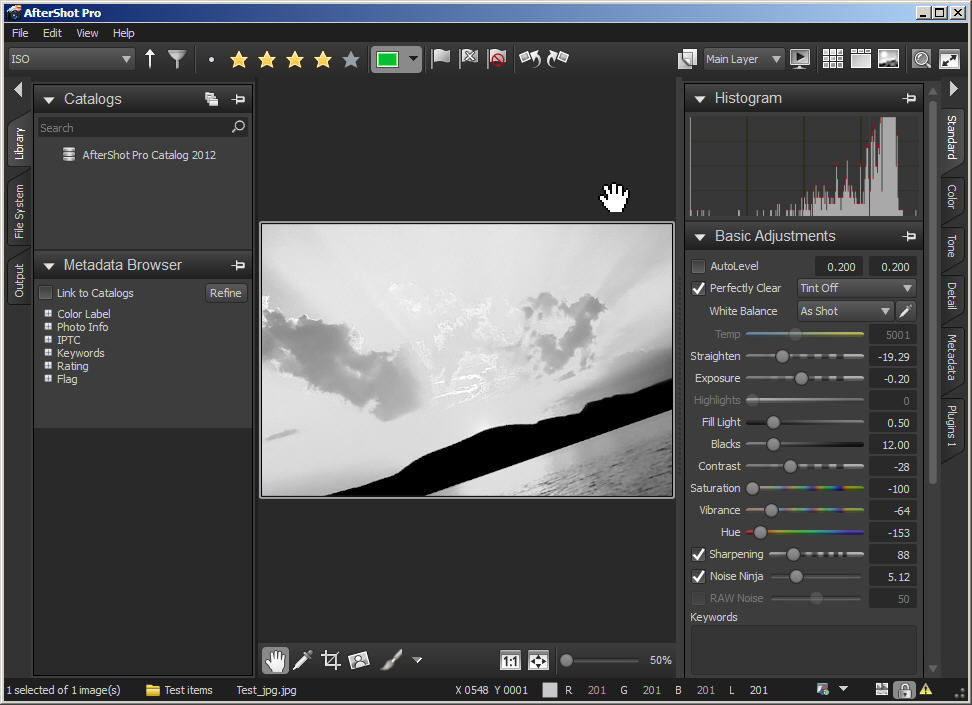

It’s a different tool with a similar name, because it’s based on the same technology-but when used for noise removal, I found that it works well.īy default, all of these adjustments will affect the image as a whole. The Perfectly Clear moniker makes another appearance, this time under the Detail tab where it’s used for noise removal. Dig in, and you’ll find curve adjustment tools, color correction and balance, exposure controls, and more. There’s a vertical tool pane running across the window’s right side with clearly labeled tabs such as Tone, Details, and Metadata. It was not as impressive as I’d hoped.Īn image with Perfectly Clear applied (right) and without (left).įortunately, image adjustments are easy to make. This button is supposed to quickly optimize your images-sort of like Picasa’s I’m Feeling Lucky feature-but in actual use, I found that it mainly lightened images and made them more contrasty. Combined with AfterShot’s robust support for RAW images, this makes for a fun editing playground.ĪfterShot Pro 2 comes with a tempting button labeled Perfectly Clear. AfterShot lets you compare these versions side by side and adjust each independently-and when browsing your photo collection in thumbnail mode, you can stack image versions so they only take up a single thumbnail. Non-destructive editing also means you can easily create multiple versions of a given image and try out different adjustments. Image versioning takes some getting used to but comes in handy. Any changes you make are fully reversible, since they’re saved alongside the original image in an XMP file. Working directly on the disk makes for very fast browsing, and you still get to enjoy one of AfterShot’s key features: non-destructive editing. You can choose whether you want AfterShot to import your photos into a database or work on the folder structure you already have on the disk (similar to what Picasa does). Illustrator is one program nobody has yet to match on open source or Linux, especially if you are a Wacom user.Thumbnails load quickly, and it’s easy to switch between different viewing modes. It is also rubbish compared to Illustrator (as is Corel Draw). Inkscape is NOT for photograph developing, it is like Illustrator, scalable vector illlustrations. You should also invest in a Wacom (or alternative) tablet for image editing.

You are probably better off with Gimp 2.9. Paintshop Pro is soooo slow, and the workflow is terrible. Just read up on them on the AfterShot Pro forums. As soon as they acquire software, it goes to hell. AfterShot Pro has no direction, they will dump it in a second, also raw formats are rather lacking.
#Corel aftershot pro 2 linux software#
You should not be using a pixel editor for photographic raw processing, because the workflow rather sucks with them.Īs for Corel software, you WILL get burnt by them, they are the WORST software company on the planet. They should be able to run off a NAS, wheras with Lightroom you had to mount the files in a VHD to be stored to and read from the NAS, because Lightroom uses sqllite I believe for it's database. So, if you work with DNG, as you should for your "picks" and keeper images (with embedded RAW), then, they are very lacking in that support. DarkTable is still using xmpp sidecar files, which is a pain. I usually keep my RAW images embedded in DNG and also the metadata and development changes.


One problem with these editors, they do not read embedded DNG developments done in Lightroom.


 0 kommentar(er)
0 kommentar(er)
